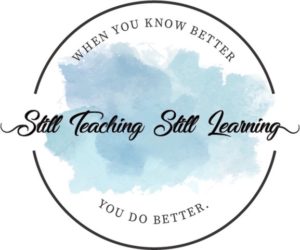
I have over 30 years experience teaching and instructional coaching in upper elementary grades. Clearly, I love it or I would not have lasted this long!
Here are 40 of my best tips for teaching upper elementary grades.
Student Relationships
1 – Building relationships with every single student is job #1. Every day. Even the students you don’t think are very likable. (Especially those students.)
If you try, you will find something to love in every student. Spending just a few minutes talking with students (rotate different students to focus on every day), asking them about their interests, genuinely smiling at them, and seeking to find something good will pay off every single time.
Read some of my true confessions about students HERE.
Here are some more tips for developing relationships with students who are difficult for you.

It’s a great idea to begin learning about your students from day one of school. Here are some questions that I like to use.
2 – Greet students at the door (or near the door) as they enter your classroom. That helps you make a quick connection first thing and “take the temperature” of how the student is doing.
3 – Contact every family within the first month of school to tell them something good about their child.
(I have a no-fail script for this in “Plan Your First Day and Week” module of my Get Started Teaching in Upper Elementary Grades course.)

4 – Ask families to tell you about their child. I have never met a family who did not welcome this opportunity. (Some prefer to verbally tell you rather than do that in writing, but here is a writing option to send home to families.
5 – The old saying “Students don’t care how much you know until they know how much you care” is 100% true.
6 – Never embarrass students in front of their peers. You will lose respect and trust from all of your students.
7 – Be consistent! If you make a deal with one student, ensure it’s a deal you’re willing to make with every student.

8 – Be willing to laugh with your students. (Obviously – not laugh AT them). But enjoying the funny things they say or the funny moments that happen in your class is part of the joy of the job.
9 – The quieter you speak, the better they listen.
10 – Share the good stuff with your students’ families. It makes such an incredible difference.
11 – Give yourself time to cool down before responding to student misbehavior. It is okay to tell a student that you are upset and will talk with them later. (That often makes them worry more than if you addressed it immediately!) Then, reflect on how you want to handle the situation, get help from a colleague if needed, and follow up with the student.

12 – The above advice works for angry parent emails too. 🙂
13 – Speaking of parent emails – communicate with parents/caregivers frequently. Tell them what students are learning, make suggestions for how they can help at home, remind them of important dates.
If you notice a change in student academic work or behavior, get in touch with the parents. Let them know that you care about their child and solicit their help and input. Keep a copy of the email or document the date and time you left a voice mail. If anyone questions why you didn’t let them know, you’ll have the necessary proof.
14 – A student’s behavior is always telling you something. Be willing to look deeper and ask qeustions to learn about what is really going on.
15 – Give every student a clean slate. Every day. Every new year.

16 – I got this advice from a veteran teacher when I was new, and it has served me well. Find a picture of yourself at the same age of your students. Ask yourself the following questions: what kind of teacher did I need in this grade? What did my teacher do that helped me? What fears did I have at this age?
17 – Try very hard to be the teacher you would want your own children to have.
18 – Continuously teach your students to be the class that you want. If you don’t want them to make unkind comments to each other, work on improving that behavior. If you want them to feel some urgency around getting their assignments done well, work on teaching them what that looks like. Saying something like, “That is not acceptable/that is not okay/we are not going to do that in OUR classroom” in a kind but firm way really helps.

Starting the Year Off Right
19 – Think about your classroom routines and procedures and plan for those before worrying about having the world’s cutest classroom. You can always start with a minimalist style and add on later. But starting the year by teaching your students what you want them to do and how you want them to do it is very important.
From the moment students enter your classroom on the first day, have an assignment for them to do, give them an assigned seat, and be kind but firm about “what we do in our classroom” and “what is not okay in our classroom.” They want you to be in charge!
20 – Gradually introduce classroom routines, rules, and procedures in the first week of school (but not all on the first day). Then spend time reviewing and practicing throughout the first six weeks of school and after every school break as needed.
21 – Speaking of rules – limit them to three or four.
22 – Any time you question yourself about what you should do, ask yourself, “What is best for the kids? What do the kids need?” Those questions will always steer you in the right direction.

Upper Elementary Teaching Tips
23 – Observe teachers you admire. Ask them first, of course, and arrange whatever coverage you’ll need. When you go to their classroom, take notes on what you see them do. Incorporate it into your style.
24 – Overplan. Always have some “sponge” activities (that sponge up the extra time) available. Reading aloud always works if you can’t think of anything else.
25 – Some lessons or activities will either go wrong or not be as effective as you wanted. That’s okay. Everyone will survive. Go back and do better tomorrow.

26 – Focus on improving only ONE thing at a time. If you’re working on a new math instructional strategy, just stick to that until you’ve got it down. Then you can switch to something else.
27 – Read to your students! Both of you will love it.
28 – TBWA – teach by walking around. Circulate, monitor, be aware of what is happening in your classroom.

29 – It’s never too late to reset your classroom. Here are some ways to do that.
30 – Get students moving and out of their seats as much as possible during lessons. Everyone needs brain breaks occasionally! I have tips for that HERE and HERE.

Taking Care of Yourself and Remaining Positive
31 – The best thing you can do for your students is to take care of yourself. Seriously. Get some exercise. Spend time with your family and friends, and spend time by yourself. Read something for you. Journal. Pray and meditate. Go to therapy. Do whatever you need to do to take care of yourself.
32 – Avoid whiners and complainers. Find your marigold. Jennifer Gonzalez talked about this on a post on her Cult of Pedagogy blog. You can read the full post HERE.
If you plant a marigold beside most any garden vegetable, that vegetable will grow big and strong and healthy, protected and encouraged by its marigold.
Marigolds exist in our schools as well – encouraging, supporting and nurturing growing teachers on their way to maturity. If you can find at least one marigold in your school and stay close to them, you will grow. Find more than one and you will positively thrive.
33 – Keep a “happy file” of notes from students and families that make you happy. On bad days, look through your file. (I also keep a digital folder for nice emails.)

34 – Be open to change and innovation. Every year, there is a new initiative. You can hate that and complain about it or seek to learn something new from everything that comes along. You’ll be much happier if you can seek to learn.
35 – Wear comfortable shoes.
36 – Celebrate and set goals each week. Keep a journal and do some reflecting each week. Here are three reflections prompts:
Celebrate: What did I do well this week?
Analyze: What do I want to improve?
Target: What is one specific goal for next week?

Time strategies
37 – Develop routines for your before school and after school time. Here are some tips for doing that.
I have a short course on developing these routines. Take a look at it here!
38 – You don’t have to do everything. Seriously. Teachers have so much on their plates, and sometimes we hurt ourselves by adding unnecessary things.
Whenever you start to feel overwhelmed, take a step back (and a deep breath), and ask yourself what you can let go for now. Maybe you can return to that task later, but look for what you can eliminate or simplify for now.

39 – Ask your students to do as many classroom organization and clean-up tasks as possible. One of my mottos is: Never do what a student could do for you.
Try “find it and fix it.” I learned this tip from Jodi at Clutter-Free Classroom. You gamify the classroom clean-up process. Whenever you’re cleaning up (but especially at the end of the day), tell students that you’ve picked one thing that is out of place in the classroom. It could be a pencil on the floor, some paper that is out of place, a book that needs to be put away, or a chair that’s not straight. Students need to “find it and fix it.” The game ends when the room is spotless (not when the mystery item is found).
40 – Clean out your classroom every winter break and every summer break. I got this advice from my mentor teacher my first year of teaching and I have (mostly) followed that advice every year.
What is your best piece of teaching advice? I’d love to hear your ideas!
All of my content is intended to save teachers time and energy. My goal is to make good teaching sustainable while having a life outside of teaching. Let me know how I can help YOU with this quick form!

Thank you for sharing information about blog commenting sites. I was searching for sites for blog commenting, then i found your website. it such very helpful for me.
Very helpful article! I learned something new today. Keep up the great work!
Very helpful article! I learned something new today. Keep up the great work!